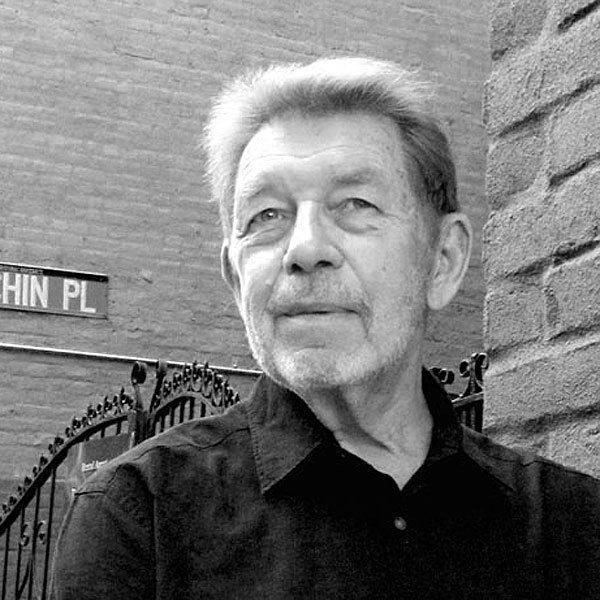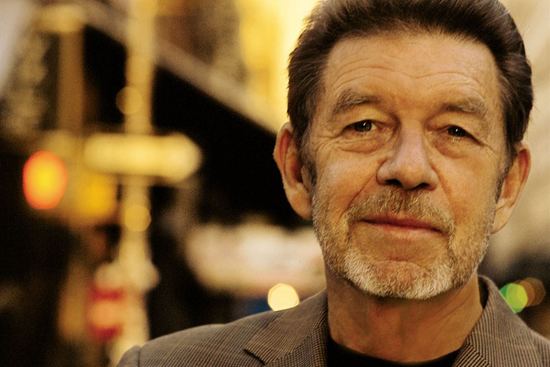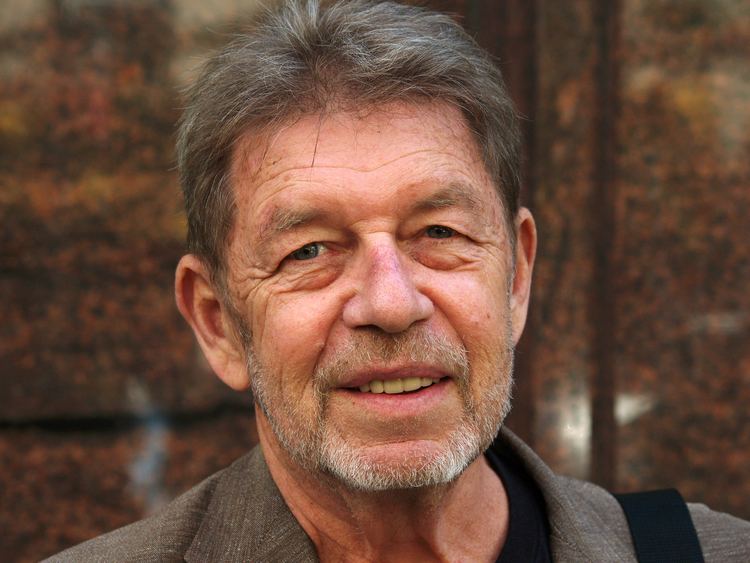Occupation Writer Name Pete Hamill | Role Journalist | |
 | ||
Spouse Fukiko Aoki (m. 1987), Ramona Negron (m. 1962–1970) Movies The Yellow Handkerchief, Snow in August, One Fine Day, A Poet Long Ago, Badge 373, Brothers: On Holy Ground, The Gift Children Deirdre Hamill, Adriene Hamill Books A Drinking Life: A Memoir, Snow in August, Tabloid City: A Novel, Why Sinatra Matters, Downtown Similar People Yoji Yamada, Udayan Prasad, Denis Hamill, Meyer Berger, James T Farrell | ||
Parents Anne Devlin, Billy Hamill | ||
Pete hamill how i met frank sinatra and why he still matters
Pete Hamill (born June 24, 1935) is an American journalist, novelist, essayist, editor and educator. Widely traveled and having written on a broad range of topics, he is perhaps best known for his career as a New York City journalist, as "the author of columns that sought to capture the particular flavors of New York City's politics and sports and the particular pathos of its crime." Hamill was a columnist and editor for the New York Post and The New York Daily News.
Contents
- Pete hamill how i met frank sinatra and why he still matters
- City talk pete hamill the christmas kid and on vietnam
- Biography
- Journalism
- Fiction
- Nonfiction
- Television and film
- Honors
- References

City talk pete hamill the christmas kid and on vietnam
Biography

The eldest of seven children of Catholic immigrants from Belfast, Northern Ireland, Pete Hamill was born in the Park Slope section of Brooklyn. His father, Billy Hamill, lost a leg as the result of an injury in a semi-pro soccer game in Brooklyn. Hamill's mother, Anne Devlin, a high school graduate in Belfast, arrived in New York on the day the stock market crashed in 1929. Billy Hamill met Anne Devlin in 1933 and they married the following year. Billy Hamill had jobs as a grocery clerk, in a war plant, and later in a factory producing lighting fixtures. Anne Hamill was employed in Wanamaker's department store, and also worked as a domestic, a nurses' aide, and a cashier in the RKO movie chain. His brother Denis would also grow up to become a columnist for the Daily News.

Hamill attended Holy Name of Jesus grammar school and delivered the Brooklyn Daily Eagle when he was 11. In 1949, Hamill attended the prestigious Regis High School in Manhattan, but left school when he was 15 to work as an apprentice sheet metal worker in the Brooklyn Navy Yard; 59 years later, in June 2010, Regis awarded him an honorary diploma. Inspired especially by the work of Milton Caniff, he was set on becoming a comic book artist. Hamill attended night classes at the School of Visual Arts (then called the Cartoonists and Illustrators School), with the goal of becoming a painter. He also took courses at Pratt Institute, which awarded him an honorary doctorate in 1980. In the fall of 1952, he enlisted in the U.S. Navy. After his discharge, in 1956-57, he was a student at Mexico City College on the G.I. Bill. Hamill has also lived in Spain, Ireland, San Juan, Puerto Rico, Rome, Los Angeles, and Santa Fe, New Mexico.
A friend of Robert F. Kennedy, Hamill helped persuade the senator to run for the United States presidency, then worked for the campaign and covered it as a journalist. He was one of four men who disarmed Sirhan Sirhan of his gun in the aftermath of the Robert F. Kennedy assassination.
Journalism
In 1958, while serving as the art director for a Greek-language newspaper the Atlantis, Hamill talked his way into writing his first piece about his friend, Puerto Rican professional boxer José Torres, then a neophyte middleweight and Olympic champion. This led Hamill to pursue writing a few letters to the editor for the New York Post of which two were printed. Hamill eventually attracted enough attention and was hired as a reporter for the New York Post in 1960. The 1962–63 New York City newspaper strike led Hamill to start writing magazine articles. By the fall of 1963 he was a correspondent for the Saturday Evening Post, stationed in Europe. Hamill spent six months in Barcelona and five months in Dublin, and traveled Europe interviewing actors, movie directors, and authors, as well as ordinary citizens. In August 1964 he returned to New York, reported on the Democratic Convention in Atlantic City, and was briefly employed as a feature writer at the New York Herald Tribune. He began writing a column for the New York Post in late 1965, and by the end of that year was reporting from Vietnam.
Over the course of nearly forty years Hamill worked at the Post, the New York Daily News, the Village Voice, and New York Newsday. He served briefly as editor of the Post, and later as editor-in-chief-of the Daily News. His resignation from the latter position after eight months prompted a letter of protest signed by more than a hundred of the paper's writers. Hamill's more extensive journalistic pieces have been published in New York, The New Yorker, Esquire, Playboy, Rolling Stone, and other periodicals. He has written about wars in Vietnam, Nicaragua, Lebanon and Northern Ireland, and reported on America's urban riots of the 1960s. Hamill wrote about the New York underclass and racial division, most notably in an essay for Esquire magazine entitled Breaking the Silence. He also wrote about boxing, baseball, art, and contemporary music, winning a Grammy Award in 1975 for the liner notes to Bob Dylan's Blood on the Tracks.
Two collections of his selected journalism have been published: Irrational Ravings and Piecework (1996). For the Library of America he edited two volumes of the journalism of A.J. Liebling. In 1998, he published an extended essay on contemporary journalism titled News is a Verb: Journalism at the End of the Twentieth Century.
Fiction
Hamill has also written fiction, producing ten novels and two collections of short stories. His first novel, a thriller called A Killing for Christ, about a plot to assassinate the Pope on Easter Sunday in Rome, was published in 1968. Drawing on his youth in Brooklyn he next wrote a semi-autobiographical novel called The Gift. Most of his fiction is set in New York City, including Snow in August (1997), Forever (2003), North River (2007), and Tabloid City (2011).
Hamill has published more than 100 short stories in newspapers, including those that were part of a series called The Eight Million in the New York Post; in the Daily News, his stories ran under the title Tales of New York. He has published two volumes of short stories: The Invisible City: A New York Sketchbook (1980) and Tokyo Sketches (1992).
Nonfiction
Hamill's 1994 memoir, A Drinking Life, chronicled his journey from childhood into his thirties, his embrace of drinking and the decision to abandon it. According to Hamill, Frank McCourt was inspired by the book to complete his own memoir, Angela's Ashes. Hamill's memoir Downtown: My Manhattan includes his reporting for the New York Daily News on the destruction of the World Trade Center on September 11, 2001, at which he was present.
His book on the Mexican muralist Diego Rivera was inspired by time spent in Mexico City in 1957 and his presence at Rivera's funeral. In Tools as Art (1995), Hamill surveys the Hechinger Collection and the incorporation of utilitarian objects for aesthetic ends. His biographical essay on the artist was featured in Underground Together: The Art and Life of Harvey Dinnerstein (2008), whose work, like Hamill's, often focuses on the people and cultural life of Brooklyn.
Hamill's interest in photography has informed recent essays in nonfiction. New York: City of Islands (2007), celebrates the photography of Jake Rajs. New York Exposed: Photographs from the Daily News (2001) contains an extended essay about the New York Daily News and its role in American photojournalism. In his introduction to Mexico: The Revolution and Beyond (2003), Hamill writes about Agustin Victor Casasola, whose photographs recorded the Revolution of 1910–1920. In his introduction to A Living Lens: Photographs of Jewish Life from the Pages of the Forward (2007), Hamill evokes the heyday of American Yiddish journalism. His text for The Times Square Gym (1996) enhances John Goodman's photographs of prizefighters, and his introduction to Garden of Dreams: Madison Square Garden (2004) offers a context for the sports photography of George Kalinski. Hamill's Irish heritage informs the text for The Irish Face in America (2004), as seen by the photographer Jim Smith.
Hamill has also written about comic strips, of which he is a collector. Among his writings on the subject are an introduction to Terry and the Pirates: Volume Two by Milton Caniff (2007), and an introductory text for a revised version of Al Hirschfeld's The Speakeasies of 1932 (2003). He also contributed an introduction to Jerry Robinson: Ambassador of Comics (2010).
Television and film
Hamill has written a handful of teleplays and screenplays, including adaptations of his own novels, and had a few minor film roles, usually playing a generic "reporter", or himself. He has appeared as a commentator in several documentaries, including Ric Burns' New York: A Documentary Film, and Ken Burns' Prohibition.
Honors
Hamill received the Ernie Pyle Lifetime Achievement Award from the National Society of Newspaper Columnists in 2005. In 2010 Hamill received an Honorary Doctor of Letters Degree from St. John's University. In 2010 he was presented the Louis Auchincloss Prize from the Museum of the City of New York. In 2014 Hamill received the George Polk Career Award.
Hamill is a Distinguished Writer in Residence at the Arthur L. Carter Journalism Institute at New York University.
Hamill won a Grammy Award for "Best Liner Notes" for his essay on the back of Bob Dylan's album Blood on the Tracks in 1975.
